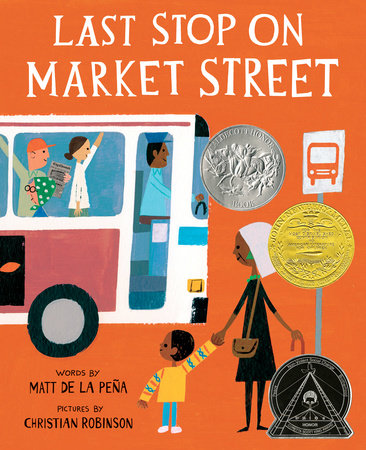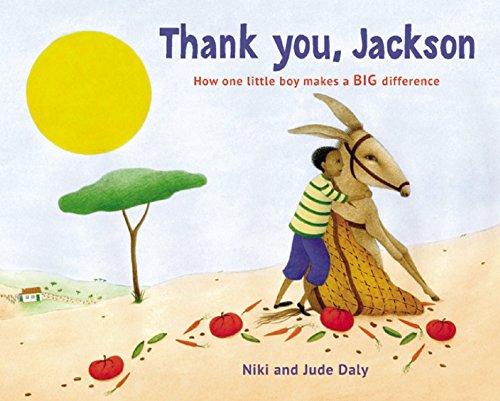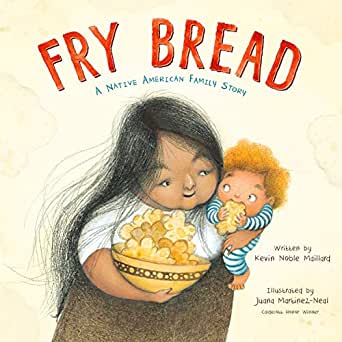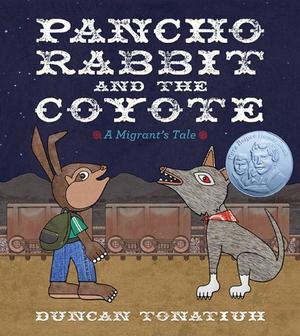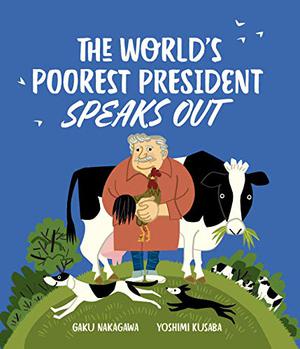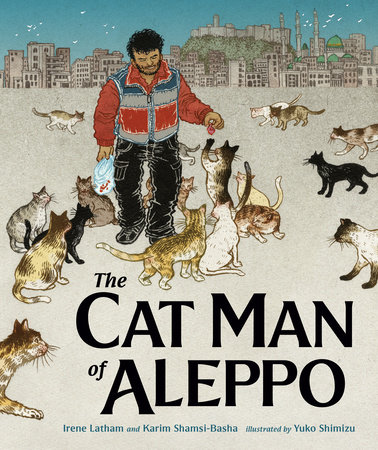Using Math to Better Comprehend Picturebooks
Mary L. Fahrenbruck and Leanna Lucero
Classroom teachers value picturebooks that focus on mathematical concepts, functions and histories. They use literature and literacy strategies to teach students math signs and symbols and math story problems (Metsisto, 2005). Picturebooks like Even Steven and Odd Todd (Cristaldi, 1996) and Fractions in Disguise: A Math Adventure (Einhorn, 2014) focus directly on mathematical concepts and on “doing mathematics” (Modi, 2012). Other picturebooks like The Doorbell Rang (Hutchins, 1989) and One Grain of Rice (Demi, 1997) contain mathematical concepts and functions in a plot that provides students with engaging mathematical explorations that extend the story. Highlighting mathematics appears to be the purpose of some of these texts. As a result, these picturebooks and others with similar plots serve primarily as mathematical teaching tools with the story taking a secondary role.
We — Mary, a literacy instructor, and Leanna, a math instructor — acknowledge the valuable ways that literature with mathematical themes can help students better understand math concepts, functions and histories. Yet, we believe that mathematics can serve a more extensive purpose during reading transactions. We contend that readers can use math as a tool to help them comprehend a wider variety of texts including picturebooks of various genres.
In this article we introduce a guiding question that shifts the focus from reading stories to learn mathematical concepts and functions to using math to better comprehend stories. That is, we want students to use math to connect with characters and their thoughts, feelings and experiences. The guiding question we propose is How can math help students better comprehend this story? To illustrate how the guiding question might work with students, we feature five high quality picturebooks organized by grade level from kindergarten to fifth grade. We offer a lesson objective for each picturebook along with one or two grade level Common Core State Standards (CCSS) for math (National Governors Association Center for Best Practices, Council of Chief State School Officers, 2010). We close each section with a discussion about how math can help students better comprehend the story.
Picturebooks for K-5 Classrooms
The picturebooks featured in this section contain thought provoking stories with which students will want to engage. The characters are diverse in age, gender, race, and socio-economic status. The settings are diverse as well, from rural to urban and national to international. Despite being matched to a specific grade level in order to illustrate the guiding question, we think students of all ages and grade levels will connect with each of these picturebooks.
We suggest that teachers first read aloud to students one of these featured picturebooks. Students should hear or read the story in its entirety before they engage in the lessons.
Kindergarten: Last Stop on Market Street (Matt de la Peña, 2015)
Every Sunday after attending church, CJ and Nana ride the city bus to the last stop on Market Street. Today, CJ seems more aware of his circumstances and surroundings. CJ asks Nana why others appear more fortunate than them. Nana lovingly points out the blessings they have in their lives. By the end of the story students learn that CJ and Nana are headed to Market Street to help those less fortunate than themselves.
Lesson Objective
Christian Robinson’s flat illustrations remind us of those by Ezra Jack Keats. The shapes in the cityscapes and on the bus are pronounced and obvious, ready for kindergartners to identify. We suggest the following objectives for this story. By the end of this lesson, kindergarten students will be able to:
-
-
- 1. Identify at least four different shapes Robinson uses to create objects in the illustrations from
-
Last Stop on Market Street
-
-
- .
-
-
-
-
- 2. Name at least four shapes in the classroom environment and recreate the objects using geoboards on iPads or by drawing the objects with pencil on paper.
-
-
-
-
-
- 3. Draw at least four objects in a whole class mural featuring people, places, or things that make the classroom, school and community a special place to live and learn.
-
-
CCSS for Math
Most educators must connect their lessons to the CCSS. For the objectives listed above we suggest the following Kindergarten Math CCSS.
-
-
-
- 1. Identify and describe shapes.
- a. CCSS.Math.Content.K.G.A.1
-
-
-
-
-
- Describe objects in the environment using names of shapes…
-
- b. CCSS.Math.Content.K.G.A.2
-
-
-
-
-
- Correctly name shapes regardless of their orientations or overall size.
-
-
2. Analyze, compare, create, and compose shapes.
-
-
-
- a. CCSS.Math.Content.K.G.B.5
-
-
-
-
-
- Model shapes in the world by building shapes from components (e.g., sticks and clay balls) and drawing shapes.
-
- b. CCSS.Math.Content.K.G.B.6
-
-
-
-
-
- Compose simple shapes to form larger shapes. For example, “Can you join these two triangles with full sides touching to make a rectangle?”
-
-
How Math Helps Students Better Comprehend Last Stop on Market Street
Inviting students to focus on shapes in the illustrations draws their attention to the cityscape as if they were riding on the bus with CJ and Nana. Students can connect with CJ when they see what CJ points out to Nana. They can also extend the story by noticing people, places and things CJ did not point out. Teachers help students make authentic connections when they invite students to notice shapes and objects in their classroom, school and community environment.
First Grade: Thank You, Jackson (Niki Daly, 2015)
Each morning, Jackson the donkey carries the farmer’s vegetables up a hill to the market “without complaint or rest”. On this day, Jackson unexpectedly stops halfway up the hill. The farmer tries to push and then to pull Jackson up the hill. Instead of moving forward, Jackson sits down causing the vegetables to roll out of the baskets and onto the ground. Furious, the farmer threatens to hit Jackson with a stick if Jackson doesn’t move. Just as the farmer is about to strike the donkey, Goodwill, the farmer’s son, intercedes. Goodwill whispers softly into Jackson’s ear and the Donkey gets up, ready to carry the vegetables up the hill to the market. The farmer learns that Goodwill whispered the magic words, please and thank you, to Jackson.
Lesson Objective
Jude Daly’s illustrations show baskets filled to the rim with vegetables. Donkeys can carry approximately 150 pounds of weight on their backs. Is it possible that the baskets are too heavy for Jackson to carry, especially uphill to market? We suggest the following objectives for this story. By the end of this lesson, first grade students will be able to:
-
-
-
-
- 1. Identify the type and amount of each vegetable Jackson is carrying to market by examining the illustrations in
Thank you, Jackson
-
-
-
-
-
-
- 2. Calculate the weight in pounds of the vegetables in the baskets Jackson is carrying to market to determine if the baskets of vegetables are too heavy for him to safely carry.
-
-
CCSS for Math
For the objectives listed above we suggest the following first grade Math CCSS:
-
-
-
- 1. Represent and solve problems involving addition and subtraction.
- a. CCSS.Math.Content.1.OA.A.1
-
-
-
-
-
- Use addition and subtraction within 20 to solve word problems involving situations of adding to, taking from, putting together, taking apart, and comparing, with unknowns in all positions, e.g., by using objects, drawings, and equations with a symbol for the unknown number to represent the problem.
-
-
2. Use place value understanding and properties of operations to add and subtract.
-
-
-
- a. CCSS.Math.Content.1.NBT.C.4
-
-
-
-
-
- Add within 100, including adding a two-digit number and a one-digit number, and adding a two-digit number and a multiple of 10, using concrete models or drawings and strategies based on place value, properties of operations, and/or the relationship between addition and subtraction; relate the strategy to a written method and explain the reasoning used. Understand that in adding two-digit numbers, one adds tens and tens, ones and ones; and sometimes it is necessary to compose a ten.
-
-
How Math Helps Students Better Comprehend Thank you, Jackson
Inviting students to calculate the weight of the vegetables Jackson is carrying to market helps them understand that Jackson is doing hard work. Students will be able to determine if the farmer can reasonably expect Jackson to carry two baskets filled with vegetables. Teachers help students understand that some expectations of people and animals are reasonable while other expectations are not, and to be considerate of others regardless of the expectation.
Second Grade: Fry Bread. A Native American Family Story (Kevin Noble Maillard, 2019)
Fry bread is… shape, … sound, … color. Fry Bread is 17 short poems that describe the experiences of making fry bread. But Maillard doesn’t stop there. His poems and Author’s Note call attention to the significance of fry bread, placing it at the intersection of Native culture and community, and the colonizing forces that attempt(ed) to “weaken tribal governments, fracture Indigenous communities, and forcibly take ancestral lands”. Reviewers list the target audience at 3-6-year-olds. However, Fry Bread is appropriate for all age groups because of Maillard’s willingness to call attention to the origins of fry bread.
Lesson Objective
Maillard includes his Seminole family’s fry bread recipe in the Author’s Note. The ingredients–corn meal, dry yeast, coconut oil–differ from other fry bread recipes that call for flour, powdered milk and baking powder. Students can make different types of fry bread starting with Maillard’s recipe. The recipe will most likely need to be doubled or tripled depending on the number of students in class. We suggest the following objective for this lesson. By the end of this lesson, second grade students will be able to:
-
-
-
-
-
- 1. Double or triple the amount of each ingredient to make more than one batch of fry bread from the recipe in
Fry Bread
- .
-
-
-
-
CCSS for Math
For the objectives listed above we suggest the following second grade Math CCSS:
-
-
-
-
- 1. Represent and solve problems involving addition and subtraction.
- a. CCSS.Math.Content.2.OA.A.1
-
-
-
-
-
-
-
- Use addition and subtraction within 100 to solve one- and two-step word problems involving situations of adding to, taking from, putting together, taking apart, and comparing, with unknowns in all positions, e.g., by using drawings and equations with a symbol for the unknown number to represent the problem.
-
-
-
How Math Helps Students Better Comprehend Fry Bread
Students might not realize that bread consists of different ingredients that have been measured and mixed together. Teachers who invite students to measure and mix different ingredients create a shared experience between them and the characters in the picturebook who also make Fry Bread. To expand the lesson, teachers can explain that bread symbolizes sharing, unity and friendship.
Third Grade: Pancho Rabbit and the Coyote: A Migrant’s Tale (Duncan Tonatiuh, 2013)
When Pancho Rabbit’s Papá doesn’t return from his job in El Norte, Pancho sets out to find him. With the help of Coyote, Pancho rides on top of a train, floats across a river, climbs through a tunnel and walks under the hot desert sun in his attempt to get closer to his Papá. Pancho must give his food and drink to Coyote as payment for his help so when they arrive at a hut in the desert, Pancho is tired, hungry and thirsty. An evil, hungry Coyote is no match for a tired, hungry and thirsty little rabbit. How will Pancho survive the evening with Coyote?
Lesson Objective
Tonatiuh’s unique illustrations depict various scenes from Pancho Rabbit’s travels to El Norte. Students with background knowledge about migrants’ journeys from Central America can comprehend the great distance Pancho most likely traveled. However, young students might not be aware of this distance. To help them better understand the distance Pancho traveled, we suggest the following objective. By the end of the lesson, third grade students will be able to:
-
-
-
-
-
-
- 1. Measure distance on a map using mathematical concepts such as a map scale and a ruler to calculate the distance Pancho and the Coyote traveled from Central America to El Norte in the book
Pancho Rabbit and the Coyote
- .
-
-
-
-
-
CCSS for Math
For the objectives listed above we suggest the following third grade Math CCSS:
-
-
-
-
-
- 1. Use place value understanding and properties of operations to perform multi-digit arithmetic.
- a. CCSS.MATH.CONTENT.3.NBT.A.2
-
-
-
-
-
-
-
-
-
- Fluently add and subtract within 1000 using strategies and algorithms based on place value, properties of operations, and/or the relationship between addition and subtraction.
-
-
-
-
2. Represent and interpret data.
-
-
-
-
-
- a. CCSS.MATH.CONTENT.3.MD.B.4
-
-
-
-
-
-
-
-
-
- Generate measurement data by measuring lengths using rulers marked with halves and fourths of an inch.
-
-
-
-
How Math Helps Students Better Comprehend Pancho Rabbit and the Coyote
Inviting students to calculate that migrants from Central America travel over 2000 miles, a trip that can take up to 3 months traveling on foot, will help students empathize with Pancho Rabbit. They will understand how desperate Pancho is to find his Papá and how tired he is sitting in the hut at the end of the story. This math lesson will also help students better understand the long and dangerous journey many immigrants take with hopes for a better life in the United States.
Fourth Grade: The World’s Poorest President Speaks Out (Yoshimi Kusaba, 2020)
Uruguayan president José Mujica delivered a powerful speech to leaders from 192 United Nations member states at the 2012 UN Conference on Sustainable Development in Rio de Janeiro, Brazil. President Mujica called for “economic growth and progress [that] add to human happiness, not take away from it”.
President Mujica, affectionately called “Pepe” by the people of Uruguay, lives a modest life that focuses on human happiness. When he was president, Pepe continued to live on a small farm with his wife and a few animals instead of at the Presidential Palace in Montevideo. Pepe donated 90% of his presidential salary to small businesses and to organizations that help those living in poverty. Pepe Mujica’s modest lifestyle earned him the nickname, the World’s Poorest President.
Lesson Objective
Leaders from the 192 United Nations’ member states cheered long and loud after Pepe’s speech at the 2012 UN Conference on Sustainable Development. If each leader returned to their home country and shared his message, Pepe’s call to action had the potential to impact millions, perhaps even billions, of global citizens. Students might not be aware of this possibility. To help them better understand the number of people Pepe possibly impacted, we suggest the following objectives. By the end of this lesson, fourth grade students will be able to:
-
-
-
-
-
- 1. Determine the population of each country represented at the UN Conference on Sustainable Development who would hear President Jose Mujica’s message via the UN leader of their country.
-
-
-
-
-
-
-
-
-
- 2. Calculate the total population of global citizens who could have potentially heard President Mujica’s message as told to them through the UN leader of their country.
-
-
-
-
CCSS for Math
For the objectives listed above we suggest the following fourth grade Math CCSS:
-
-
-
-
-
- 1. Generalize place value understanding for multi-digit whole numbers.
- a. CCSS.Math.Content.4.NBT.A.3
-
-
-
-
-
-
-
-
-
- Use place value understanding to round multi-digit whole numbers to any place.
-
-
-
-
2. Use place value understanding and properties of operations to perform multi-digit arithmetic.
-
-
-
-
-
- a. CCSS.Math.Content.4.NBT.B.4
-
-
-
-
-
-
-
-
-
- Fluently add and subtract multi-digit whole numbers using the standard algorithm.
-
-
-
-
How Math Helps Students Better Comprehend The World’s Poorest President Speaks Out
President Mujica’s speech is like a pebble dropped into a pond. Each ripple represents a UN leader who can share Mujica’s call to action for the change the world needs. By calculating the population of each country and then adding the populations to determine a grand total of people, teachers help students realize how a single action, Mujica’s speech or their own, can impact the world.
Fifth Grade: The Cat Man of Aleppo (Irene Latham & Karim Shamsi-Basha, 2020)
Mahammad Alaa Aljaleel loves everything about Aleppo; the sights, the sounds, the smells, and most of all, the people. Alaa’s love for the people and the city motivate him to continue working as an ambulance driver even after war comes to Aleppo. Many people flee Aleppo seeking safety from fighting, taking only necessities with them. Alaa notices that many cats have been left behind. The cats are lonely, confused and hungry. Alaa wants to help the cats so he begins to collect money and buy food for the animals. Soon Alaa is feeding more and more cats every day, and he becomes known as the cat man of Aleppo. Word travels around the world about Alaa’s kindness and donations begin to come in so that Alaa can provide not only food for abandoned animals, but medical care as well. Though his work is not easy, Alaa continues to take care of abandoned animals in war-torn Aleppo thanks to donations from caring people all around the world.
Lesson Objective
Shimizu’s illustrations show Alaa feeding hundreds of cats. A check of Alaa’s Facebook page at the time of this writing revealed that there are 170 cats in his care. The amount and the cost of food for each cat is not mentioned in the story. To understand the enormity of Alaa’s work feeding 170 cats each day, we suggest the following objectives for this story. By the end of this lesson, fifth grade students will be able to
-
-
-
-
-
- 1. Determine how much food a 5-10lb cat eats each day.
- 2. Calculate the amount of food Alaa would need to feed 170 5-10lb cats each day.
- 3. Calculate the cost in dollars and cents of a single serving of cat food.
- 4. Calculate the total cost in dollars and cents of the cat food Alaa must purchase to feed 170 cats for one day; for one week; for one month.
-
-
-
-
CCSS for Math
For the objectives listed above we suggest the following fifth grade Math CCSS:
-
-
-
-
-
- 1. Perform operations with multi-digit whole numbers and with decimals to hundredths.
- a. CCSS.Math.Content.5.NBT.B.5
-
-
-
-
-
-
-
-
-
- Fluently multiply multi-digit whole numbers using the standard algorithm.
-
-
-
-
2. Apply and extend previous understandings of multiplication and division.
-
-
-
-
-
- a. CCSS.Math.Content.5.NF.B.6
-
-
-
-
-
-
-
-
-
- Solve real world problems involving multiplication of fractions and mixed numbers, e.g., by using visual fraction models or equations to represent the problem.
-
- b. CSS.Math.Content.5.NF.B.7.c
-
-
-
-
-
-
-
-
-
- Solve real world problems involving division of unit fractions by non-zero whole numbers and division of whole numbers by unit fractions, e.g., by using visual fraction models and equations to represent the problem.
-
-
-
-
How Math Helps Students Better Comprehend The Cat Man of Aleppo
Many students have experiences feeding and caring for a family pet. However, they may not be able to grasp the enormity of Alaa’s task of feeding the cats. Teachers who help students calculate the amount of cat food needed along with the cost of the food shed light on the logistics of Alaa’s work of purchasing and distributing food to the cats in his care.
Getting Started in the Classroom
Shifting one’s thinking about math as a separate and distinct subject (discipline oriented) to thinking about math as a learning tool for enhancing comprehension (utility oriented) can be difficult at first. To help teachers get started in their classrooms, we offer three suggestions about text selection, determining a focus and framing the lesson.
Selecting a Picturebook
Readers will notice that in these examples, we intentionally feature picturebooks with social justice themes like poverty, colonization, immigration and consequences of war. Each picturebook contains a relevant theme that resonates with students and can be explored using mathematical concepts and functions. We suggest teachers choose a picturebook with themes that the students in their classrooms care about and will want to investigate further. Teachers can use the Advanced Search feature to search the Worlds of Words database by theme and websites like StoryTrail as a first step.
Determining a Focus
Most picturebooks have many layers of meaning throughout the narrative and the illustrations. Teachers might have difficulty choosing a focus for their math investigation. We want to reiterate our suggestion that teachers begin by reading aloud the entire picturebook they select at least once to the students. As teachers read, they should listen to the comments and questions the students share. We have found that our most successful lessons resulted from students’ inquiries shared during the read aloud.
The Guiding Question
Even though each math exploration we feature aligns with a grade level CCSS, the guiding question, How can math better help us comprehend this story? frames each lesson. The question directs the planning development, from the lesson objective, to the instructional process, to the final lesson assessment. We suggest teachers keep the guiding question at the forefront of the lesson planning process.
Final Thoughts
We think planning lessons with the guiding question is straightforward and worth the time. Using math as a comprehension tool will most likely be a new way of thinking for teachers. Even so, we hope the picturebook examples in this article provide teachers with an entry point into this way of thinking about math.
Children’s Literature References
Cristaldi, K. (1996). Even Steven and Odd Todd (H. Morehouse, illus.). Scholastic.
Daly, N. (2015). Thank you, Jackson (J. Daly, illus.). London: Frances Lincoln.
de la Peña, M. (2015). Last stop on Market Street (C. Robinson, illus.). Putnam’s.
Demi (1997). One grain of rice. Scholastic.
Einhorn, E. (2014). Fractions in disguise: A math adventure (D. Clark, illus.). Charlesbridge.
Hutchins, P. (1989). The doorbell rang. Greenwillow Books.
Latham, I., & Shamsi-Basha, K. (2020). The cat man of Aleppo (Y. Shimizu, illus.). Putnam’s.
Maillard, K. N. (2019). Fry Bread. A Native American family story (J. Martinez-Neal, illus.). Roaring Brook Press.
Tonatiuh, D. (2013). Pancho Rabbit and the coyote: A migrant’s tale. Abrams.
Yoshimi, K. (2020). The world’s poorest president speaks out (G. Nakagawa, illus., A. Wong, trans.). Enchanted Lion Press.
References
National Governors Association Center for Best Practices, Council of Chief State School Officers (2010). Common Core State Standards for Math. National Governors Association Center for Best Practices, Council of Chief State School Officers, Washington D.C.
Metsisto, D. (2005). Reading in the mathematics classroom. In J. M. Kenney, E. Hancewicz, L. Heuer, D. Metsisto, & C. L. Tuttle (Eds.), Literacy strategies for improving mathematics instruction (9-23). Alexandria: Association for Supervision and Curriculum Development.
Modi, K. (2012). Story telling in mathematics. Voices of Research. 1(2), 31-33.
Mary L. Fahrenbruck is an Associate Professor in the School of Teacher Preparation, Administration and Leadership at New Mexico State University in Las Cruces, New Mexico. (ORCID https://orcid.org/0000-0002-3067-9830)
Leanna Lucero is an Assistant Professor of Curriculum and Instruction in the College of Education at New Mexico State University in Las Cruces, New Mexico. (ORCID https://orcid.org/0000-0002-1055-0191)
© 2021 by Mary L. Fahrenbruck and Leanna Lucero
WOW Stories, Volume IX, Issue 1 by Worlds of Words is licensed under a Creative Commons Attribution-NonCommercial-ShareAlike 4.0 International License.
Based on a work by Mary L. Fahrenbruck and Leanna Lucero at https://wowlit.org/on-line-publications/stories/volume-ix-issue-1/6/.
WOW stories: connections from the classroom
ISSN 2577-0551

